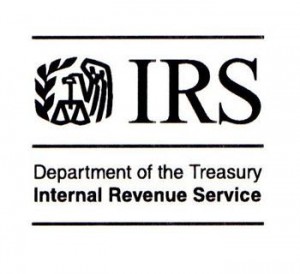April 30, 2012
MEMORANDUM FOR MANAGER, EP DETERMINATIONS
FROM: Mark O’Donnell, Acting Director, EP Rulings & Agreements
SUBJECT: Processing of Governmental Plans Determination Letter Applications with respect to Vesting Issues
Purpose: This memorandum sets forth procedures to be applied when reviewing the vesting provisions in determination letter applications for governmental plans (as defined in Section 414(d) of the Internal Revenue Code (Code». Pursuant to this memorandum, favorable determination letters may be issued with respect to current Cycle C and Cycle E determination letter requests for governmental plans that satisfy one of the safe harbor vesting schedules described in this memorandum. Current Cycle C and Cycle E determination letter requests for governmental plans that fail to satisfy any of these safe harbor schedules should be referred to Dan Jones or Robert Contreras of the Determinations Quality Assurance staff for further analysis and resolution.
Background: Section 401(a)(7) provides that a trust does not constitute a qualified trust under Section 401 unless the plan of which such trust is a part satisfies the requirements of Section 411. Section 411 prescribes rules relating to the accrual and vesting requirements for qualified retirement plans. Section 411(e)(1) provides that the provisions of Section 411, other than Section 411(e)(2), do not apply to a governmental plan within the meaning of Section 414(d). Section 411(e)(2) provides that a governmental plan is treated as meeting the requirements of Section 411, for purposes of Section 401(a), if the plan meets the vesting requirements resulting from the application of Sections 401(a)(4) and 401(a)(7) as in effect on September 1,1974.
Accordingly, a governmental plan that satisfies the vesting requirements of Sections 401(a)(4) and 401(a)(7) as in effect on September 1,1974 (the pre-1974 Code vesting requirements) is treated as satisfying section 411, including the rules in Section 411(a) through (d).
In 1972, the Service issued Publication 778, Guides for Qualification of Pension, Profit-Sharing, and Stock Bonus Plans (Pub. 778), a compendium of guidance relating to Code qualification requirements as then in effect for retirement plans. Pub. 778 summarized several revenue rulings relating to the vesting of benefits that were in effect before the enactment of the Employee Retirement Income Security Act of 1974 (ERISA) on September 2,1974. Part 5(c) of Pub. 778 states that “[v]arious [vesting] provisions are in use, ranging from complete and immediate vesting through different forms of graduated vesting (upon completion of stated service or participation requirements and/or reaching a specified age) to no vesting until attainment of normal or stated retirement age. Full vesting of an employee’s interest is then required.” Part 5(c)(1) of Pub. 778 states that the facts and circumstances of each case determine whether a plan’s vesting provisions satisfy the requirements of Section 401(a). In addition, Section 1.401-1(b)(3) of the Income Tax Regulations provides that a plan must meet the requirements in operation as well as in form (see also Part 5(j) of Pub. 778).
Part 5(c)(2) of Pub. 778, under the heading, Vesting on Retirement, states that a “plan will not be held to qualify if it fails to provide that an employee who has reached the normal retirement age (in case of a pension or annuity plan) or the stated age or other specified event has transpired (in the case of a profit-sharing or stock bonus plan) and has satisfied any reasonable and uniformly applicable requirements as to length of service or participation, is vested in the contributions made or benefits payable under the plan.”
In consultation with the Office of Chief Counsel, we have concluded that whether a governmental plan satisfies the pre-1974 Code vesting requirements depends on the plan’s vesting provisions (including the plan’s definition of normal retirement age and benefit commencement provisions), and that a governmental plan’s satisfaction of Section 411(e)(2) depends on both its form and operation.
We have included three safe harbor vesting schedules that we have determined, with advice from the Office of Chief Counsel, would satisfy the pre-1974 Code vesting requirements. It seems likely that the vesting schedules of most governmental plans are at least as favorable to participants as at least one of the safe harbor schedules. The safe harbor vesting schedules are:
- 15-year cliff vesting schedule: The plan provides that a participant is fully vested after 15 years of creditable service (service can be based on years of employment, years of participation, or other creditable years of service).
- 20-year graded vesting schedule: The plan provides that a participant is fully vested based on a graded vesting schedule of 5 to 20 years of creditable service (service can be based on years of employment, years of participation, or other creditable years of service).
- 20-year cliff vesting schedule for qualified public safety employees: The plan provides that a participant is fully vested after 20 years of creditable service (service can be based on years of employment, years of participation, or other creditable years of service). This safe harbor would be available only with respect to the vesting schedule applicable to a group in which substantially all of the participants are qualified public safety employees (within the meaning of Section 72(t)(10)(8)).
Plans with vesting provisions that are more favorable to participants than these safe harbor vesting schedules are also deemed to satisfy the pre-1974 Code vesting requirements. Examples of more favorable vesting provisions include full and immediate vesting, full vesting after 10 years of creditable service, and vesting based on a graded vesting schedule that phases to full vesting on completion of 15 years of creditable service.
These safe harbor vesting schedules apply only for purposes of satisfying the pre-1974 Code vesting rules relating to reasonable and uniformly applicable requirements as to length of service or participation as applied to governmental plans. The safe harbor vesting schedules do not apply for purposes of the vesting of employee contributions or on the termination of a plan. The full and immediate vesting of employee contributions and the full vesting of benefits upon termination of the plan are still required.
Procedures: Governmental plans with vesting provisions that result in the vesting of the employer-provided benefit at least as rapidly as under one of the safe harbor vesting schedules set forth in this memorandum are deemed to satisfy the pre-ERISA vesting rules. Favorable determination letters may be issued with respect to these plans if no other issues exist.
Governmental plans with vesting provisions that do not result in vesting at least as rapidly as under one of the safe harbor vesting schedules set forth in this memorandum may not be issued a favorable determination letter on the plan at this time. These plans should be referred to Dan Jones or Robert Contreras of the Determinations Quality Assurance staff for further analysis and resolution.
If you have any questions regarding this memorandum, please contact Sherri M. Edelman at 202-283-9587.
The rules of sections 411(e)(1) and (2) also apply to “a church plan (within the meaning of section 414(e)) with respect to which the election provided by section 410(d) has not been made, a plan which has not, at any time after September 2, 1974, provided for employer contributions, and a plan established and maintained by a society, order, or association described in section 501 (c)(8) or (9), if no part of the contributions to or under such plan are made by employers of participants in such plan.” See sections 411(e)(1)(B), (C), and (D).
There is no parallel provision to Code section 411(e)(2) in title 1 of the Employee Retirement Income Act of 1974 (ERISA). See section 4(b)(1) of ERISA (title 1 is not applicable to governmental plans).
See, e.g.. Rev. Ruls. 66-11 (1966-1 C.B. 71) and 68-302 (1968-1 C.B. 163).
Pub. 778, part 5(c)(1) cites to Rev. Ruls. 68-302 and 71-151 (1971-1 C.B. 123). See also Rev. Rul. 71-150 (1971 C.B. 123).
Pub. 778, part 5(c)(2), cites to Rev. Ruls. 66-11 and 68-302.
The Office of Chief Counsel also advised us that if a governmental plan’s vesting provisions could satisfy the pre-1974 Code vesting rules without the use of attainment of normal retirement age, then it would not need a definition of normal retirement age to satisfy the vesting requirements relating to reasonable and uniformly applicable requirements as to length of service or participation. For example, a plan that provides for immediate vesting (and otherwise provides for definitely determinable benefits) upon a termination of employment after a reasonable period of service generally satisfies the pre-1974 Code vesting rules even if it has no definition of normal retirement age.
 Both the federal and state governments are reporting increases in the pace of employee retirements in recent years. The causes are complex, including everything from a bulge of workers hired in the 1960s and now retiring to flattened public sector salaries and furloughs. However, in at least some instances, part of the motivation is that employees who have maxed out on their pensions may have a financial incentive to retire (or even find jobs in the private sector) in order to begin collecting retirement benefits.
Both the federal and state governments are reporting increases in the pace of employee retirements in recent years. The causes are complex, including everything from a bulge of workers hired in the 1960s and now retiring to flattened public sector salaries and furloughs. However, in at least some instances, part of the motivation is that employees who have maxed out on their pensions may have a financial incentive to retire (or even find jobs in the private sector) in order to begin collecting retirement benefits.
 The
The  ERISA section 3(32), 29 U.S.C. § 1002(32), defines a governmental plan (exempt from Title I of ERISA) as:
ERISA section 3(32), 29 U.S.C. § 1002(32), defines a governmental plan (exempt from Title I of ERISA) as: